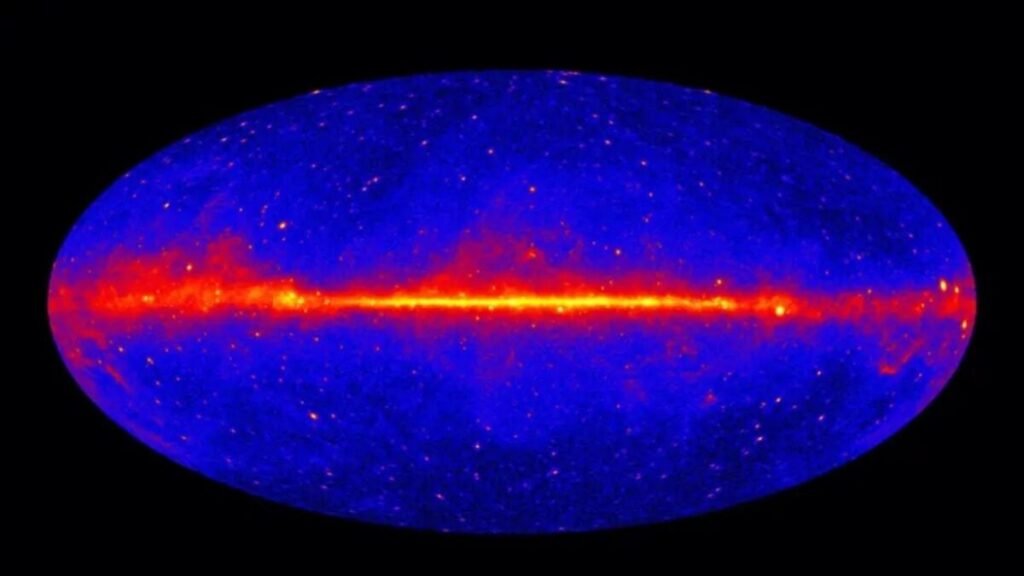A Luminous Anomaly: Is This the Highly Anticipated Detection of Elusive Dark Matter in the Universe?

In the heart of the Milky Way, where the light of the stars barely manages to penetrate the cosmic dust, It does not come from a supernova, nor from a black hole, nor from any known source. Its signature is strange: high-energy gamma rays, invisible to the human eye, but detectable by the Fermi space telescope. The discovery could change everything. That faint glow could be —for the first time— the invisible component that represents 85% of the universe and that, however, has never been directly observed. A substance that does not emit, reflect, or block light, but whose gravity shapes entire galaxies.
The shadow that holds the cosmos together
It emerged almost a century ago, when astronomers noticed that galaxies were spinning too fast for the amount of visible matter they contained. Something invisible must be holding them together. Since then, places it back in the center of the stage. According to its authors, led by astrophysicist Joseph Silk (Johns Hopkins University and Sorbonne University), the glow observed by Fermi could be due to collisions of dark matter particles that annihilate each other, releasing energy in the form of gamma rays. “Understanding the nature of dark matter is one of the greatest challenges of modern physics,” explains Silk. “Our new key result is that the data fit the predictions of dark matter at least as well as the rival hypothesis of neutron stars.”
Two opposing hypotheses
For years, researchers have considered two possible explanations. One points to a swarm of millisecond pulsars —neutron stars spinning hundreds of times per second—, invisible so far but capable of emitting gamma rays. The other, bolder, proposes that it is the energetic trace of dark matter particles colliding with each other. that combines computer simulations and real observations, suggests that both hypotheses fit the data with similar precision. But the pattern of the glow —diffuse, symmetrical, and persistent— slightly fits better with the dark matter model.
The next decisive experiment
. But scientists have a stronger card in play: the Cherenkov Telescope Observatory, a facility under construction in Chile that, when operational in 2026, will be the most powerful gamma-ray detector in the world. will be able to distinguish between gamma rays generated by pulsars and those produced by dark matter particles. If the observed signal comes from the latter, it would confirm one of the most anticipated discoveries in cosmology.
The invisible fabric of the universe
. The current theory holds that the Milky Way, and all galaxies, formed around huge clusters of dark matter, whose gravity attracted the gas that later formed the stars. Without that invisible mass, the universe would have dispersed before being born. Silk summarizes it this way: “Ordinary matter cools and falls toward the center of galaxies, dragging part of the dark matter with it. It is the invisible scaffold on which everything we see was built.”
A light in the void
Perhaps that glow that shouldn’t exist is the echo of the very origin of the universe., we may end up finding the answer to a question that has been haunting us from the beginning: what is the cosmos really made of?






